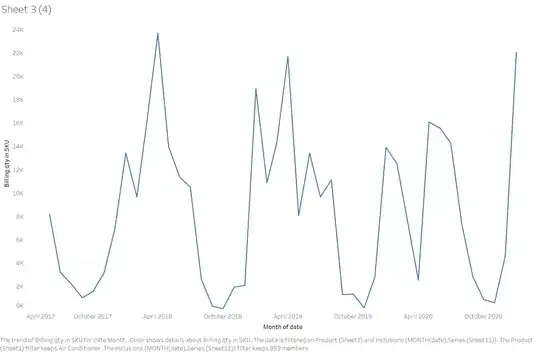I had been modeling time series which contain many SKUs , due to corona there was a short-term drift in seasonality. I want to know how can i deal with this problem.
Usually, sales are high in April, but due to corona sales had dropped significantly in aprilb2020, this is causing models performance to deteriorate, I have tried using categorical variables to explicitly label corona effect, but this is not helping ML to learn significantly, what would be a good approach that i can try to mitigate this unforeseen effect. I am using tree-based models for machine learning.

Asked
Active
Viewed 22 times
1
Richard Hardy
- 54,375
- 10
- 95
- 219
abubakar ilyas
- 43
- 5
-
Related: [How can you account for COVID-19 in your models?](https://stats.stackexchange.com/q/514358/1352) – Stephan Kolassa Mar 20 '21 at 09:10
-
Thank you @StephanKolassa – abubakar ilyas Mar 21 '21 at 07:05
-
Hey @StephanKolassa, i have checked this link , i could not comment there because i donot have enough reputations, i did understand the use of predictors to detect or separate anomalies but what i do not get is how should one model a new behavious that rises after corona, in my case before corona sales were declining but after corona they have started to rise, dummy predictor variables only help during training so that ML or other algorithms can differentiate outliers from others. What to do with the newer pattern, should I fit the trend on pre-corona first and post-corona separately. – abubakar ilyas Apr 17 '21 at 09:18
-
1You can fit models separately. Or use a dummy that is set to 1 until the pandemic, 0 afterwards - this will model a step change. An interaction between this predictor and the trend predictor will model a break in the trend. – Stephan Kolassa Apr 17 '21 at 15:31